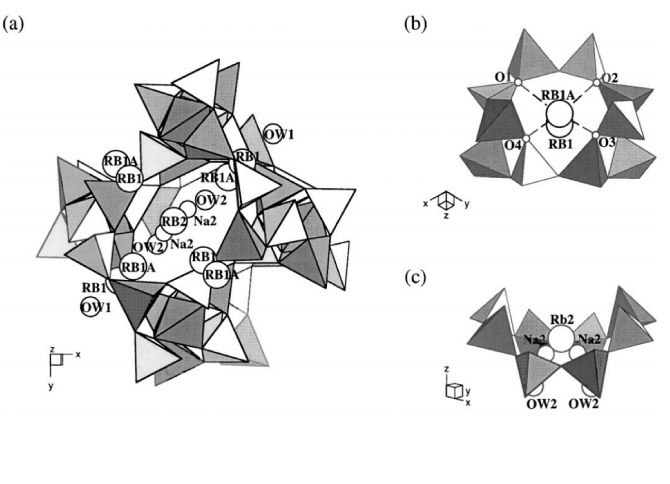"Synthesis and crystal structures of gallium- and germanium-variants of the fibrous zeolites with the NAT, EDI and THO structure types"
- Authors
Y. Lee, S.J. Kim, J.B. Parise
- Journal
Microporous and Mesoporous Materials
Vol.34, No.3, pp255-271, 2000.03 - DOI
Abstract
Two synthetic gallosilicates and a gallogermanate with the NAT, EDI and THO framework topologies have been synthesized under hydrothermal conditions and characterized by single crystal synchrotron X-ray diffraction. K-GaSi-NAT, K8Ga8Si12O40·6H2O, is tetragonal, space group I4̄2d, with a=13.639(2), c=6.545(1) Å. The framework model shows complete disordering of Ga and Si in tetrahedral sites, which is analogous to tetranatrolite but contrasts with the partial ordering in Na-GaSi-NAT. The T-sites of RbNa-GaSi-EDI, Rb7NaGa8Si12O40·3H2O, exhibit partial disordering of Ga and Si in space group P4̄21c. This leads to a cell doubling along the chain axis (c) with a=9.773(1), c=13.141(3) Å, a super cell modification of the Na-exchanged K-F structure. In Rb-GaGe-THO, Rb20Ga20Ge20O80·15H2O, a=14.335(3), b=14.198(3), c=13.421(3) Å, complete ordering on both tetrahedral and extra-framework sites lowers the symmetry from Pncn to the acentric space group Pn2n. An inspection of framework T O T bond angles, which are related to rotation and distortion of the chains, explains the differences in unit cells between these gallium- and germanium-variants and aluminosilicate analogs. The elliptical 8-ring windows, generated by four crosslinked chains in RbNa-GaSi-EDI and Rb-GaGe-THO, are the sites for (Rb,Na) and Rb cations, respectively, while the helical 8-ring channels formed in K-GaSi-NAT host only water molecules. The T10O20 windows, built by two neighboring chains, provide sites for K or Rb cations in each model. Mechanisms are proposed for cation–framework interactions, which are in turn responsible for the observed framework models.












